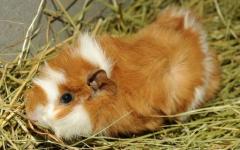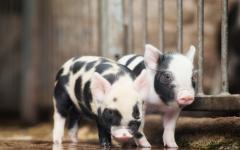In spring, central France resembles a yellow-green chessboard as rapeseed begins to bloom. The sides of country roads turn into boundless golden oceans, and only somewhere on the horizon are islands of villages with triangular roofs and church towers looming.
Probably no driver can resist the temptation to briefly take his eyes off the road and look at the transformed landscape. However, few people are able to spare a little time to stop and take a short walk through the endless rapeseed fields of France.
There are paths along the fields that can be easily used. Some even have their own names and are marked on the map:

On the nameplate (the Croisies trail is the name of the nearest village) there is even space for some local coats of arms:

The first rapeseed field on my way is small, but already promising:

Another field on the very outskirts of the village:

Rapeseed is a herbaceous plant of the Brassica family. It is used as a basis for animal feed, as well as for the production of oil and biofuel.

The largest producers of rapeseed are the European Union, China, India, Canada and Ukraine. In Russia, production is gradually growing, especially in the south, in the Stavropol and Krasnodar regions.

The furrows heated by the sun attract not only birds, but also all kinds of living creatures. For example, an important village cat, lying down to think about the eternal:

Or the hare, which immediately showed me its tail, all I had to do was come closer:

During the flowering of rapeseed in the fields there is a very unusual atmosphere. It smells of herbs and honey (rapeseed is a good honey plant), and insects are buzzing. Sometimes a disturbed partridge quickly flies out from under the yellow carpet, making so much noise that it seems as if at least a wild boar is rushing in your direction. I even jumped in surprise.

Honestly, hunting for yellow fields quickly turns into racing against the clouds. As soon as you stop on the side of the road and take out your camera, the sun disappears behind another cloud, and the field loses a large share of its photogenicity. From here there are two options: wait ten minutes until the sun comes out again, or drive to the nearest illuminated field, trying to outrun the rest of the clouds. Over time, you begin to notice how the shadows of the clouds float across the plain, and you plan your route in real time, taking this information into account.

I have never seen completely endless fields: a forest or a church bell tower, an elevator or a water tower always looms on the horizon.

On the outskirts of another village with the funny Russian name Omon (fr. aumone- “alms”) I finally found my photonirvana - huge rapeseed fields on both sides of the road. There is even a bench with a view:

Ocean of Molten Gold:

Soft and fluffy solar blanket:


Heated air rises from the fields, distorting the outlines of distant objects.

Sitting on such a pile is a pleasure. Especially in the evening before sunset:


Deserted rural road:



Some local residents I met looked at my camera in surprise, and I looked at them and thought how anyone could pass by this yellow madness indifferently.


The island of the village of Bruet in the middle of the warm Sunny Sea:

It is difficult to imagine that such a simple and “unglamorous” plant as rapeseed can so radically transform the surrounding landscape. Almost as photogenic as fields of lavender or tulips, but much more widespread, rapeseed for me is one of the signs of spring, with its color setting us up for the already imminent sunny summer. A real feast for the eyes.

There are many wild and cultivated plants in nature. Most of them people have never seen in their lives. Rapeseed can easily be considered such crops.
But many people know rapeseed, the closest relative of this plant. Everyone knows what the fields look like with it. This is a solid yellow carpet on meadows and fields. This crop is characterized by the same flowering. So, what is rapeseed?
Botanical characteristics of rapeseed

Seed preparation
After harvesting, rapeseed seeds do not require special processing or preparation for sowing. It is necessary to clean and dry the crop. Be sure to etch the material with Royalflo 14 days before sowing. For 1 ton it is necessary to use 30 liters of liquid.
Before planting, rapeseed seeds must meet the following characteristics:
- humidity up to 12%;
- weight of 1000 seeds - 3-7 g;
- germination rate - 96%;
- purity - 97%.
When growing rapeseed, you should remember that this plant is prone to the development of diseases and pest attacks. It is especially vulnerable in the early stages of development. Therefore, before planting, be sure to treat the seeds with insecticides and fungicides. But that's not all. Additionally, the seeds are treated with agents that protect rapeseed from diseases.
After preparing the soil and successful planting, the crop needs careful care. Seedlings should also be fertilized regularly. Important microelements such as magnesium, boron, sulfur, molybdenum, manganese, copper, zinc, cobalt. Why? After all, for example, a lack of boron can cause delayed flowering and thickening of the trunk. And in the absence of sulfur, the pods may not even begin to form. Therefore, all microelements must be added to the soil in the form of fertilizers.
Spring rape
It is sown depending on weather conditions, or more precisely, on soil temperature. At a depth of 2-4 cm, the soil should have a temperature of up to -7 0 C. Such conditions make it possible to protect plants from attack by pests. In addition, rapeseed can compete with weeds in growth.
Most often this plant is sown in early spring. There are also certain rules here. The row sowing method assumes a seed planting depth of 2 cm. In this case, the distance between the rows should be about 15 cm. This planting method involves planting 120 seeds per 1 m2.

Winter rapeseed
Experts recommend sowing such rapeseed at the end of summer. By December, the plant reaches 25 cm in height, and there are about 8 leaves on the stem. Such a sprout can withstand cold weather without problems. Winter rapeseed grows well on fertilized sandy loam soils and loams. Very acidic soil is not suitable for the plant, as it causes stagnation of moisture. Approximately 200 g of seeds are sown per 100 m2. They are planted to a depth of 3 cm, and a distance of 30 cm is left between the rows.
Harvesting
The plant is characterized by uneven flowering, which means that the maturation of some specimens differs from each other. Therefore, during cultivation there is a possibility of losing part of the crop. After all, overripe pods burst and the peas fall out.
Harvesting takes place using a combine. And non-industrial areas can be processed with a flat cutter. Cleaning winter rapeseed begin when the plants are fully mature. In this case, seed moisture should not exceed 9-12%. A relatively low indicator indicates a significant loss of yield during harvesting.
If there are plants on the site with a strong difference in the ripening period, separate harvesting is used. In this case, the seed moisture should be within 35-45%, and the pods should be yellow-colored. green color.

Harvesting rapeseed
Growing spring rapeseed is practically no different from growing winter rapeseed. Cleaning is done in the same way. If the area is heavily clogged with bedstraw or daisies, the area is sprayed with desiccant. This procedure is carried out either at the beginning of ripening or before harvesting. After treatment, after 7 days you can safely harvest. In this case, the seed moisture should be about 20%.
Pest, disease and weed control
Clearing weeds before planting does not guarantee complete protection. After all, their seeds often remain in the ground, which can germinate simultaneously with the crop. To protect against weeds, you should use various drugs: Fusilade, Butizan, Lontrel.
The most dangerous pests for rapeseed are the rapeseed flower beetle and the cruciferous flea beetle. You can protect the plant from their negative influence with the help of special preparations: “Decis”, “Alpha”, “Fastak”.

Fungal diseases have a detrimental effect on the plant during the growth period. Often rapeseed is affected by downy mildew, Alternaria blight, and sclerotinia. You can protect the plant from these diseases with fungicide solutions by spraying the seedlings.
Harvest storage
Immediately after harvesting, the rapeseed is dried and cleaned according to technology. The storage of this crop is particularly influenced by its oil content. 8-9% humidity is the indicator at which peas are stored well. It is removed from the seeds using fans or thermal dryers.
The seeds are cleaned from green residues in special sieves. Experts recommend using a sieve with slots for this, rather than with round holes.
The effect of rapeseed on the soil
Many people believe that cultivating rapeseed has a negative impact on the condition of the soil. But experienced agronomists refute this opinion. Growing this crop, on the contrary, has many advantages:
- reduces the risk of wind and water erosion, thereby improving soil quality;
- reduces weediness of fields;
- quickly clears the ground.
Rapeseed has a positive effect on soil structure. A developed root system loosens well at a certain depth, absorbs the accumulation of nitrates and improves crop rotation. After harvesting winter rapeseed, a lot of organic residue remains in the ground, which fertilizes the soil.
This plant destroys rot in the ground, which negatively affects the development of other plants. In addition, rapeseed is an ideal precursor to cereal crops. Why? This sequence allows you to get good harvest grains at no additional cost.
Now many people know what rapeseed is. Many agronomists say with confidence that this is the plant of the future.
Not everyone knows about this oilseed and fodder agricultural plant, although the history of its cultivation goes back thousands of years. Rapeseed - what is it? For what purposes is it used? And how useful is the oil from its seeds?
Natural hybrid for general purposes
Information about what rapeseed is will certainly be useful to beginning farmers and gardeners. It is an agricultural crop that is grown in for various purposes.Let's name the main ones:
- for livestock feed;
- for the production of rapeseed oil;
- for the production of diesel fuel, lubricants and biofuels;
- as a green manure crop.
Rapeseed green manure represents a worthy alternative organic fertilizers. This is very important for farms involved in growing crops. Moreover, he is an excellent honey plant. From 1 ha rapeseed field you can get 60-90 kg of honey. Like this wide range use.
In Kuban and other southern regions of the country you can find huge rapeseed fields, which fascinate with their beauty during flowering. Carpets of tall yellow flowers attract travelers, but keep in mind that the plant is prickly underneath, so a photo shoot in rapeseed can result in scratches and other skin damage.
To have an idea of what the plant looks like, it’s enough to remember its closest “relative” - rapeseed. A botanical characteristics they differ.
Rapeseed is an annual herbaceous plant of the Cabbage genus of the Brassica or Cruciferous family. It does not have a single wild ancestor, like many cultural “relatives”, i.e. it is natural natural hybrid, containing chromosomes of two parental forms (rape and cabbage). The difference between rapeseed and other cruciferous vegetables is the presence of 3 types of leaves:
- the lower ones are strongly indented, have petioles and a rounded upper part, collected in a basal rosette;
- medium - neck-shaped, long;
- the upper ones are lanceolate, with a widened base and a solid edge, sessile.
Rapeseed crop has winter and spring forms. And they have certain differences.

Winter and spring varieties
Winter rapeseed can reach a height of 2 m, has erect large stems, the diameter of some varieties is 3 cm. Its spindle-shaped tap root goes into the soil 2-3 m, and at a depth of 20-40 cm it begins to branch and grow in the horizontal direction.
The green (or gray) rapeseed stalk is covered with a waxy coating. Branches of the first order depart from it, there are 20-30 of them.
The foliage can be strong or weak, depending on the type of crop, the color of the leaves is blue-green or purple.
As we have already mentioned, the flowers are yellow, collected in racemes. The fruits are pods reaching a length of 10-12 cm. The seeds are dark in color, spherical in shape, very small, there are about 30 of them in a pod. The crop is propagated by seeds, their germination remains up to 6 years.
Winter varieties are sown in August. In the southern regions this is the end of the month, in middle lane Russia is in its second decade. Sow in rows with an interval of 45-50 cm. Winter hardiness is low: young seedlings can withstand spring frosts down to -4ºС.
The best lands for winter crops are sandy loam, loamy and black soil. Stagnant water can be detrimental to them.
In the spring, after about a month of active growth, the plant blooms, and this process also lasts a month. The total growing season of winter crops is more than 300 days.
Growing winter rapeseed as a fodder crop has incomparable advantages over other crops:
- one of the first to produce green mass;
- the amount of protein during processing is comparable to alfalfa.
In Russia, winter varieties are grown mainly in the southern regions and the North Caucasus, where winters are warm. The best of them are Yubileiny, Kyiv 18, Nemerchansky 2268, Dublyansky, Mytnitsky 2.
Spring rape has a second name - colza. Like other spring crops, it is sown in early spring and harvested at the end of July. The entire growing season takes 100 days. In Russia, it is cultivated as a fodder crop in the Western and Central regions, as well as in Siberia. The most popular varieties: Kubansky, Vasilkovsky, Lvovsky, East Siberian.
For livestock feed, rapeseed is cut 2 times:
- the first - before flowering;
- the second - after the growth of new green mass.
The application of fertilizers - organic and mineral, significantly increases crop yields.

What are plant seeds made from?
The world leaders in growing rapeseed are Canada, the EU and China. By the way, during the Second World War, fuels and lubricants for military equipment Allied countries were produced from rapeseed oil, so in Canada its acreage was urgently increased. And in the post-war years, Asian countries expanded their rapeseed crops.
Currently, biofuels are made from rapeseed seeds, and from its technical oil - diesel fuel and jet engine lubricant.
If the production of rapeseed oil for technical and economic purposes is completely justified, then the issue of using edible rapeseed oil is controversial. Its opponents claim that the oil has a negative effect on the heart and blood vessels, while supporters talk about its safety and cheapness. In terms of oleic acid content, it is comparable to olive oil, which is why rapeseed is often called the northern olive. And if earlier the oil actually contained large quantities of chlorophyll group pigments (due to which it had a green color), erucic acid and glycosinolates, then in a modern high-quality product these substances are reduced to a minimum. The result of the work carried out by geneticists in this direction was canola - rapeseed oil with low acidity (erucic acid content no more than 2%).
On modern market vegetable oils, the share of rapeseed oil is about 14% and tends to increase. It is used by many manufacturers of processed foods, chips, popcorn, confectionery and margarine. Preparing fast food is also not complete without canola.

Green manure
Both winter and spring species are excellent soil green manures due to the growth large quantity green mass and branched roots that loosen and structure the soil.
Sowing winter crops can reduce the leaching of nitrogen by groundwater, retain snow, and prevent soil erosion. In winter, living mulch will protect against severe freezing of the soil, and in spring the crops will actively grow and produce green mass before anyone else. After mowing and embedding it into the ground, the soil is enriched with organic matter, sulfur and phosphorus, and the number of weeds is noticeably reduced. Rapeseed green manure significantly reduces the incidence of soil diseases.
With the onset of spring, the crops will restore their vegetation, begin their active growth, and then flowering. Mow the green mass when green pods appear. This can be done with a cultivator or a flat cutter. To make the biomass decompose faster, it is watered with an EM preparation or water. And after 3-4 weeks, seedlings of tomatoes, peppers or eggplants can be planted in these areas.
Sowing spring rapeseed can be done from March to August, but it is still preferable early dates. The plants do not form a leaf rosette. The height of the stem can reach 80-150 cm. The green mass is mowed when the first pods form, but the yield of a spring crop will be less than that of a winter crop.
To increase efficiency, mixtures of green manure are used: simultaneous sowing of winter rape with rye or spring rape with vetch.
Interest in rapeseed not only does not wane over time, but also increases. Breeders are working to improve the crop to increase its yield, frost resistance, protective functions. And summer residents and gardeners, knowing what it is about rapeseed, introduce it into crop rotation to improve the soil and obtain large yields of cultivated crops.
Rapeseed is the plant of the future. It's ancient cultivated plant was forgotten for a long time. However, since the end of the twentieth century, interest in rapeseed has increased sharply, and today this plant is already one of the strategically important plants of the future.
The main regions for growing rapeseed are Asia, Europe and North America. It is also grown in Russia, New Zealand, northern Africa, and South America. The geography of cultivation of this plant becomes larger every year.
Ancient cultivated plant
It is believed that rapeseed is one of the first plants cultivated by humans and was cultivated more than 4 - 6 thousand years ago. It is quite difficult to determine the time of cultivation of rapeseed, due to constant mixing with other plants of the cruciferous family. In addition, historically the word “rapeseed” was also used to refer to many plants, such as rapeseed, mustard and other ancient oilseeds from the cabbage family.
In Europe, rapeseed was a particularly popular agricultural crop from the Middle Ages to the mid-19th century. Rapeseed oil was used in food, for lighting homes and as a lubricant.
Later, with the advent of petroleum products and increased diversity food products, the plant has been less popular for a long time.
Plant of unknown origin
The origin of rapeseed is unknown. There is an assumption that rapeseed came from crossing field cabbage and rapeseed (Brassica campestris) with cabbage (Brassica oleracea).
There is no consensus on the place of origin of rapeseed. The birthplace of rapeseed is considered to be Europe and the Mediterranean, from where the plant could have been brought by European colonialists to India and China. However, some scientists believe that rapeseed appeared in India much earlier. It is believed that rapeseed was cultivated in India 4 thousand years ago.
It is also impossible to determine the homeland of rapeseed, because wild rapeseed is unknown. Today in many countries it sometimes occurs cultivated rapeseed in a wild state. The plant has very small seeds that are dispersed by the wind and during transportation. So in Denmark, rapeseed often grows along roads.


Botanical characteristics

Rapeseed flowers are bright yellow. The inflorescence is a long, loose raceme, consisting of 25-30 buds, blooming from bottom to top within a month. Photo April 28 2019, Aarhus, Jelshøj, Denmark

The rapeseed harvest season is approaching. Rapeseed fruits are narrow pods containing small round semana seeds rich in oil. Photo July 22, 2017, Odder, Denmark

A rapeseed pod contains up to 30 seeds. Rapeseed seeds are spherical, hard, dark brown small balls with a diameter of 1-2 mm. Photo 30 Sep. 2017, seeds collected in a field near Odder, Denmark
Rapeseed – 2 harvests per year
The rapeseed harvest can be obtained in summer and autumn, i.e. There are winter and spring cultivations of forms of rapeseed.
The plant overwinters in mild winters without sudden temperature changes. In Denmark, winters are quite mild, so winter rapeseed is preferred here.
Winter rapeseed has a higher yield and the seeds contain more oil than spring rapeseed. However, winter rapeseed is very demanding on the climate in winter period. Therefore, in countries with a continental climate (as in many regions of Russia, Belarus, Kazakhstan, and China), growing winter rapeseed is quite risky. Spring rapeseed is commonly grown in these countries.

In May, Denmark is covered with a bright yellow carpet of flowering rapeseed. It's an amazing sight. Photo May 25, 2017, Billund, Denmark

On the way from Lego Land we stopped near a rapeseed field to enjoy this spectacle. Photo May 25, 2017, Billund, Denmark
Rapeseed in Denmark
Rapeseed from Denmark is the main oilseed crop. Due to lack of heat in summer, soybeans and sunflowers are not grown here. Preference is given to rapeseed, which is less demanding of heat and prefers moisture. But the climate in Denmark is not particularly warm and it rains often. The long photoperiod in summer also favors the cultivation of rapeseed in Denmark.
Especially in Lately Rapeseed production has increased sharply in the country. According to official statistics from Danmarks Statistik, rapeseed cultivation in Denmark increased by 16% from 2014 to 2015. Rapeseed was in 3rd place after other major crops such as winter wheat and spring barley. the profitability of rapeseed, which is determined by increased demand and high yields (especially new varieties).

Rapeseed is the plant of the future. Yield per year of various oilseeds (tons/ha): oil palm, rapeseed, sunflower, soybean (from right to left). Photo from an exhibition in the botanical garden of Aarhus, Denmark. Photo May 10, 2017
Rapeseed oil – feature
Rapeseed oil contains polyunsaturated acids that are physiologically important for the body, antioxidants (vitamin E), vitamins A, D, F and B, carotenoids, and microelements, which makes the oil valuable for nutrition. However, traditional rapeseed varieties also contain some substances (erucic acid and sulfur-containing organic compounds) that may have negative health effects. That is why, until recently, rapeseed oil was not particularly valued as an edible oil, but was used mainly for technical purposes.
In the middle of the last century, a lot of breeding work was carried out and new varieties were obtained with the absence harmful substances. In the 80s of the last century, a new era in the history of rapeseed began. Oil from new varieties of rapeseed (colza) was recognized as harmless and allowed for use in food. Improvements in the quality of rapeseed oil have caused a significant increase in demand for rapeseed. This oil has increasingly begun to appear in stores in northern Europe and Canada.
Denmark traditionally exports seeds for Agriculture. Recently, the main demand has been for eruce-free varieties of edible rapeseed (colza).
Rapeseed oil – Nordic olive oil
Today, rapeseed oil (colza) has become the most common vegetable oil and is sold in all countries. Rapeseed oil is increasingly used in the food industry. Most often, edible refined oil is found on sale. This oil is similar in color and taste to sunflower oil. Rapeseed oil price and sunflower oil are also within the same limits, at least in Denmark (10 - 11 crowns per 1 liter).
70 million liters of refined oil are consumed today in Denmark. The oil is used for frying, making margarine, mayonnaise, and in baking and confectionery production.
Recently, unrefined rapeseed oil obtained by cold pressing has increasingly begun to appear on sale. This amber-yellow oil has a special aroma and taste. Unrefined oilmore suitable for dressing salads and cold dishes (unrefined oil is not recommended to be heated). This oil still has not outweighed the demand for olive oil among the Danes, although it tastes and smells very much like olive oil.
To attract the interest of the Danes to refined oil, a research project, whose goal was to increase demand for oil. The project involved chefs and celebrities who introduced the Danes to new ways of using oil in cooking and convinced the Danes of the benefits of rapeseed oil, which today in Denmark is called Nordic olive oil.

Famous Danish chef Claus Meyer uses rapeseed oil to prepare dishes at a food exhibition. Photo Aug 26 2007, Stadium Arena Aarhus, Denmark
 |
Rapeseed oil is similar in properties to olive oil; it is transparent, does not deteriorate in the air for a long time, and does not go rancid. |
Rapeseed – the plant of the future
The plant is beneficial in many respects, so we can reasonably say that rapeseed is the plant of the future.
This plant is practically waste-free. After pressing the oil, the cake is used as animal feed in livestock farms. The green plants themselves can also be used as feed crops for livestock.
In addition, rapeseed is a green fertilizer that enriches the soil with nitrogen and improves soil structure.
In addition to cooking, food-grade rapeseed oil is used in cosmetology and medicine. Technical/non-edible rapeseed oil is also widely used: as lubricants in metallurgy, in the textile industry, in soap production.

Mini-greenhouse near the “house of the future” (Vision Dome in Aarhus), rapeseed grows in the mini-greenhouse - the plant of the future. Photo May 14, 2017, Aarhus harbor, Denmark
Recently, due to rising fossil fuel price trends and concerns environment, the demand for rapeseed for the production of liquid fuel – biodiesel – has increased.
In Denmark, companies have already appeared that sell special heating systems based on biodiesel from rapeseed oil. And biodiesel is called the fuel of the future.









